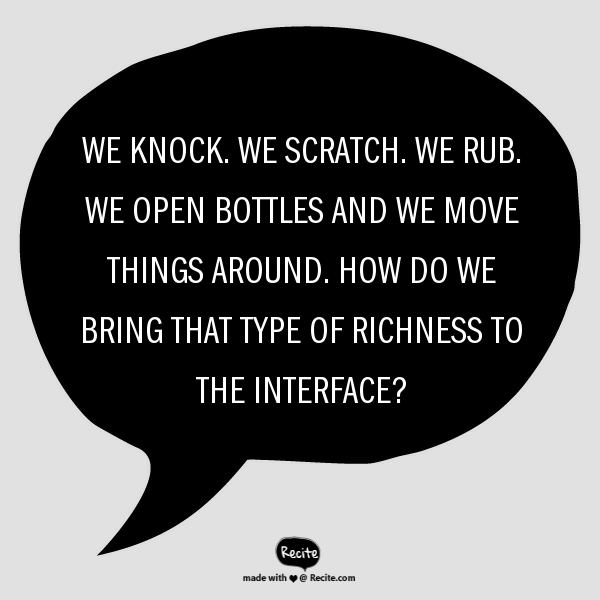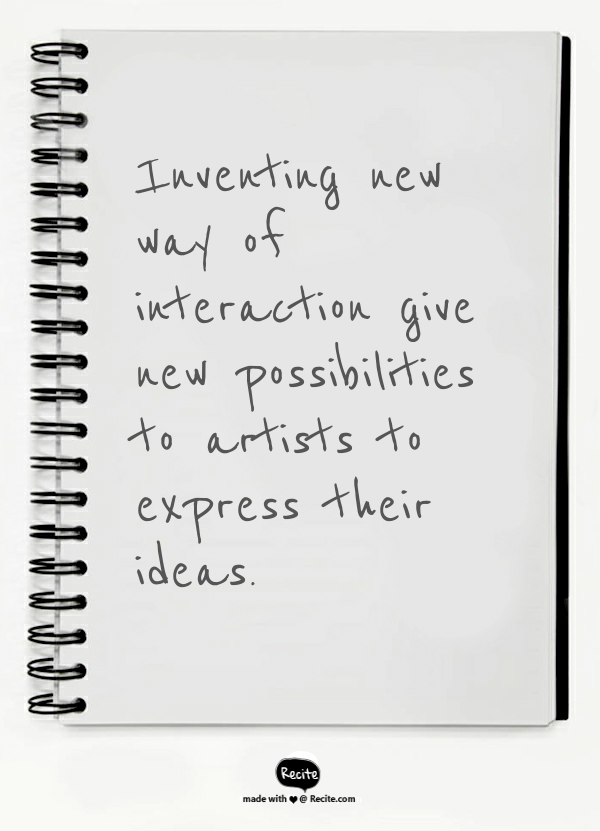Post
Tactile interfaces between past and future
Keyboards, mouses, pencil, wheels, multi-touch. Since the start of the electronic revolution, several different peripheralsand interfaceswere invented to connect the real and the digital, atoms with bits, our bodies with electronic (and non-electronic) machines.
Today still, the research in this sector is quite bustling, with four major trends gaining ground: vocal, gestural, tactileand (even) neuronalinterfaces.
Several state-of-the-art laboratories (including the Tangible Mediateam of the MIT, led by Hiroshi Ishii) are trying to improve the quality of our interactions with technology devices in view of the near future where sensors and processors are preparing to colonise any and every daily use objects.
50 billion objects connected by 2020
With the Internet of Thingsgaining ground, it is even more important to lighten the cognitive burden associated to our interactions with hi-tech devices, in order to make their use more and more natural, fluidand spontaneous. Frictionless, would be the exact and precise word in the English language.
For this to happen, one must leave behind external peripherals (as we have known them thus far) and start incorporating interfaces within the same devices. Just like Steve jobs began doing with the launch of multi-touchtechnology.
But before we venture into the futureof tactile interfaces, it is better to summarise the steps that brought us here with the help of this interactive timeline.
The future between robots, augmented reality and laser projectors
But can we really consider multi-touch as being the endpoint of user interfaces? Absolutely not, says Chris Harrison, Assistant Professor of Human-Computer Interaction at Carnegie Mellon University and Director of the Future Interfaces Group.
Imagine if the only thing you could use in the real world to operate things were a touch or a swipe. The world would be completely unusable.
Much like Ishii’s group at MIT, Harrison’s team is investing massively on tactile interfaces breaking the barrier between pixels and screens. As a recent example, “Skin Buttons” is a system expanding smartwatch interfaces beyond their micro screen. Thanks to a number of laser projectors, our arms become a much handier touchpad.
Other researchers are looking in the direction of augmented reality and thermal technology. The company Metaiois workingright on a similar system that can turn every surface into a touch-screen with definitely “augmented” visual effects.
Another study from Brooklyn, in turn, is working on Thumblesrobot interfaces where the visual elements that appear on the screen can be shifted and manipulated: thus, they finally break the virtual wall and touch technology is no longer a metaphor, but a true mode of interaction.
Other technologies, then, look in the direction of holograms (for instance, the impressive HoloLens presented recently by Microsoft) or, again, special conductive materials such as those used by Ideum to envisage the desk of the future.

Chris Harrison
These sensory interfaces will play a key role the more the Internet of Things will start turning every object surrounding us into a potentially connected device.
If really our notepad, as well as our toothbrush, our pensand our mugscan be connected (just to mention a few examples of common use objects that already are), then multi-touch won’t be of much need. Completely new interfaces must be invented to go beyond our fingers and offer a richer tactile experience.
Inventing new interfaces is not merely a technological challenge, but also about the ability to envisageand build our future, just like Hiroshi Ishii advocates when he says:
“Many research projects are driven by technology, but the technologies of today go into landfill next year. Applications will be obsolete in 10 years. Vision is very strong and survives our lifespan.”
At the same time, inventing new interfaces allowing to touch and not just see digital information, may ultimately open new ways for human creativityto explore.

Hiroshi Ishii
